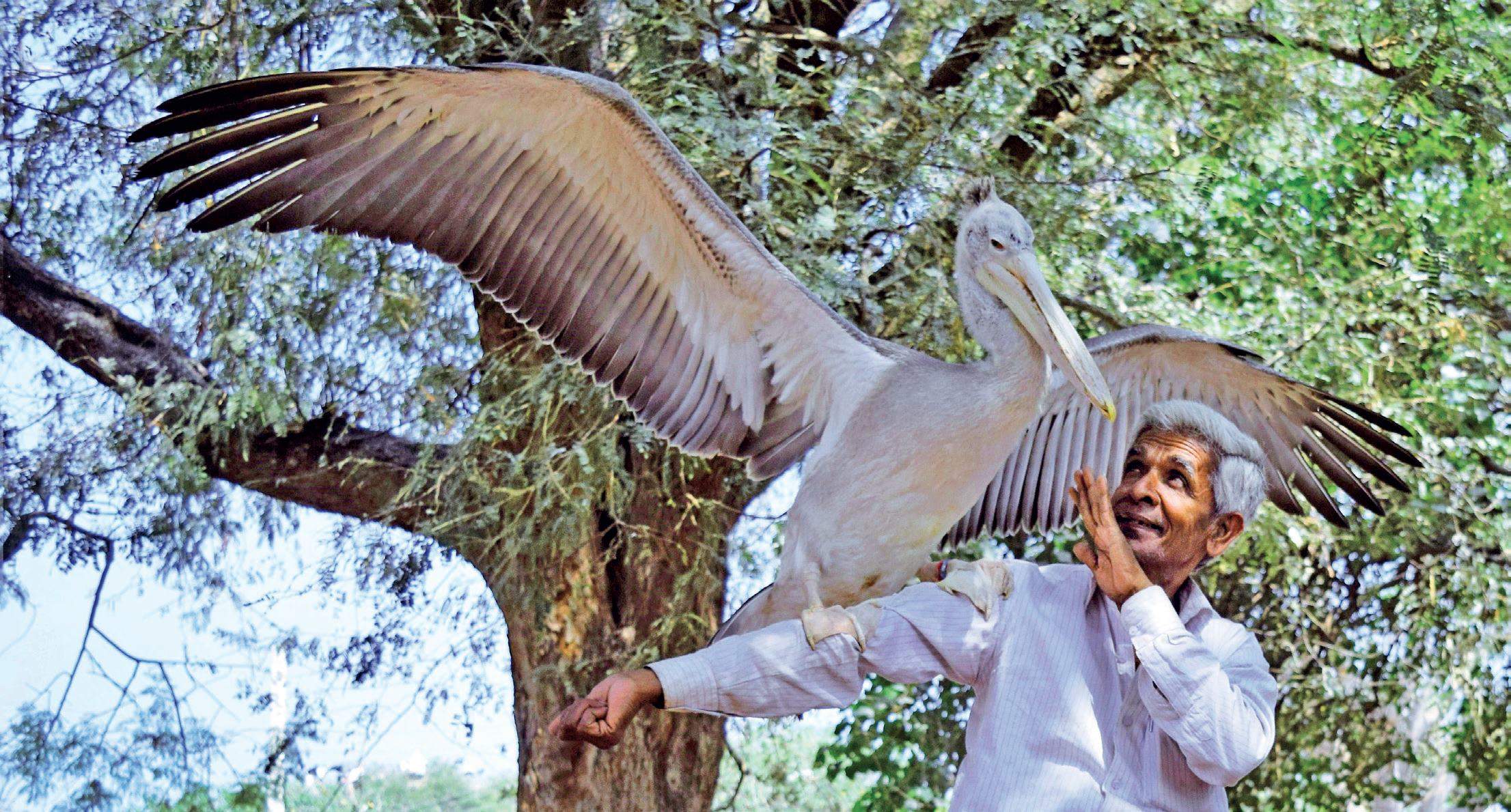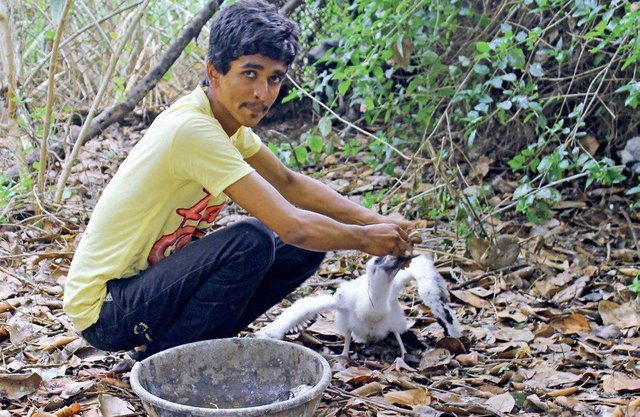
Farmer Linge Gowda; Photo: G Chidananda
MYSURU: The squaking of the first migratory birds at the break of dawn are his cue to get busy. Right from the onset of winter in November till the end of the monsoon season in July, farmer B Linge Gowda (64), a resident of Kokkare Bellur, goes around the famed pelicanry looking for tiny chicks that may have fallen off their nests and tends to them. He nurtures them carefully, protecting them from becoming prey to cats, dogs and snakes, and once they grow wings, he sets them free, in the care of Mother Nature.
The village is a popular nesting and breeding ground for migratory birds. Linge Gowda has been saviour to thousands of young ones and injured birds over the last 23 years. He is so popular in the village that even if children spot fallen chicks or injured birds, they immediately bring them to Linge Gowda’s doorstep. He has even set up a pen on his land and nurtures the young birds in a cage to protect them from dogs and cats. The injured birds are let free in the pen.
The migratory birds nest on the treetops, lay about three-four eggs and incubate them for about 20 days. Sometimes, the young ones fall down accidentally, while attempting to fly or due to strong winds. Dry straw and cow dung are spread around the trees to soften the fall of the young ones.
The rescued birds are fed fish and provided treatment by veterinary doctors. Utmost care is taken till they are released back to nature.
 A youth nursing a bird at Kokkare Bellur I G Chidananda
A youth nursing a bird at Kokkare Bellur I G Chidananda
The birds consume about 1.5 kg to 2 kg of fish every day, which is bought from fishermen who catch fish in the Shimsha river that flows close to the village. Linge Gowda, who also owns a fair price shop in the village, forks out about `10,000 every year tending to the birds.“Over the past two decades, it has become a regular affair for Linge Gowda to go around rescuing birds. If it were not for him, thousands of birds would have died or easily become prey to other animals. He saved about 62 chicks last year. A few years ago, he had saved 26 chicks in just one breeding season,” says Shivabasappa, who accompanies Linge Gowda in his free time.
“Plague struck our village in 1917 and we moved out to a distance of about 1 km and lived in temporary shelters for some time. To our surprise, the birds came to where we were living for breeding. They are part of our lives. We have developed a close relationship with the birds. When they start flying back in flocks, we feel sad and look forward to the next season,” adds Shivabasappa.
The Inspiration
Linge Gowda’s tryst with the winged visitors dates back to 1994. He said, “K Manu, founder of Mysore Amateur Naturalists, had visited the village that year. He saw fallen chicks being eaten up by cats, dogs and snakes. He interacted with villagers and created awareness. Until then, we never knew how to protect birds.”Inspired by Manu, Hejjarle Balaga, a community initiative, was started by the villagers for conservation of migratory birds. But with the passing years, the Balaga has been left with only one member -- Linge Gowda. Just last week, three birds had fallen off trees and Linge Gowda is doing everything to save them. The children in the village too have been educated about protection of birds.

“A power line passes through the village and every year nearly two dozens birds would die of electrocution. I brought the issue to officials’ notice, and two years ago, the electric wires were insulated at a cost of `48 lakh. Since then, no birds have died due to electrocution here,” he adds.“There is need to conserve bird species. These migratory birds have been coming here for centuries but their importance is being realised only now,” says Linge Gowda, who lives with his wife and three children.
Initiatives for conservation
Kokkare Bellur has been declared as a Samudaya Samrakshitha Pradesha (Community Bird Conservation) reserve as the birds nest and breed amidst villagers. Endangered birds like the Spot-billed Pelican and Painted Stork can be spotted in large in this village. Other birds that come here are: Black Ibis, egret, kingfisher, pelican, Bhraminy kite, etc, apart from other native species. The birds nest on treetops and in agriculture fields.
A huge banyan tree, tamarind trees, Peepal tree and other trees in the village are dotted with the birds during the season. The birds catch fish in a pond located in the village and at the nearby Shimsha river. They also fly for 80-90 km in search of food. The government is planning to develop the pond and increase the water flow in the lake. The villagers cannot take up any development works without permission from the government.
The village is spread over 773 acres and there are around 450 families. Deputy Conservator of Forests V Yedukundala said, “The Spot-billed pelicans migrate from Eurasia. They start arriving from November and can be spotted till June. This is an endangered species. The population of the bird in the world is 12,000, and we can find around 600-800 birds in Mandya district alone.”
Reference: http://www.newindianexpress.com/cities/bengaluru/2017/dec/24/birdman-of-kokkare-bellur-1735711.html
Hi! I am a robot. I just upvoted you! I found similar content that readers might be interested in:
http://www.newindianexpress.com/cities/bengaluru/2017/dec/24/birdman-of-kokkare-bellur-1735711.html
Downvoting a post can decrease pending rewards and make it less visible. Common reasons:
Submit